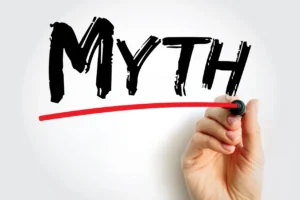The Anatomy of a Simple Exchange Transaction
By Ken Tharp, Iowa Equity Exchange
 One of the most common questions I get asked is something along the lines of “Can you just explain to me how an exchange actually works?” Just as no two real estate sales are identical, no two exchanges are the same. What this blog attempts to do, however, is present the steps of a typical delayed exchange transaction in a simplified format.
One of the most common questions I get asked is something along the lines of “Can you just explain to me how an exchange actually works?” Just as no two real estate sales are identical, no two exchanges are the same. What this blog attempts to do, however, is present the steps of a typical delayed exchange transaction in a simplified format.
A basic exchange is actually a fairly simple process, but many, many considerations must be made in order to ensure that the exchange is done properly to qualify for tax deferral.
THE FIRST STEP
The first step of a §1031 exchange is generally the recognition that an exchange may be in order. An investor, for whatever reason, wishes to sell a property that would qualify for tax deferral through the use of §1031 of the Internal Revenue Code. He contacts a Qualified Intermediary (QI) such as Iowa Equity Exchange and an exchange agreement is drawn up and signed by the intermediary and the investor. Now everyone waits until a buyer is found for the property that the investor is selling. (Alternatively, the investor may already have a buyer and the exchange agreement is created after the property is under contract. The critical factor is that the sale must not have closed prior to signing the exchange agreement.)
THE SECOND STEP
When the property sells, the next step is getting it closed. The QI will have some paperwork for the buyer to sign, usually no more than one or two documents, that notify the buyer of the exchange and request his acknowledgment. As the closing approaches, the QI provides a set of documents and instructions to the closing agent for the transaction. Included is the information on what the closer is to do with the proceeds of the transaction, which in a typical case will be wired directly into a newly-established bank account to be held in trust by the QI during the exchange period.
From the date of closing, the exchanger has a period of forty-five (45) calendar days to properly identify potential replacement properties. To identify replacement properties requires the exchanger to provide a list of those properties to the QI under the rules of §1031, which are made clear to the exchanger by the QI. In many cases, the exchanger has been looking for potential replacement properties since his property was first put up for sale, or even before. Because the 45 day period often seems to pass rather quickly, it is a good idea for an exchanger to have an active plan of how to locate potential replacement properties. If the identification process fails, the exchange is over and the tax obligation is not deferred, so this step is critical.
Keep in mind that the replacement property need not be under contract during the 45 days, merely properly identified. The replacement property can be placed under contract prior to the closing of the relinquished property, during the 45-day identification period, or after the identification period has ended (as long as the property is listed on the identification letter).
THE THIRD STEP
At some point in a successful exchange, the replacement property is placed under contract. Regardless of the point at which the property is placed under contract, the exchanger has a total of one hundred eighty (180) calendar days from the date of closing of the relinquished property to close on the replacement property. As with the sale of the relinquished property, the QI prepares a couple of notification/acknowledgement documents for the seller of the replacement property to sign. Time passes and the closing date of the replacement property approaches. The QI provides documents and instructions to the closing agent for the replacement property. When the closing occurs, the proceeds that the QI has held in trust are wired to the closing agent. The closing occurs and the exchanger has successfully completed his exchange for the new property.
THE WRAP UP
After the replacement property has closed, the QI will compile all of the documents used throughout the exchange process. A set of these documents is provided to the exchanger, and if desired, can be provided to the exchangers legal and tax advisers as well. At that point, the exchange is concluded.
SOME ADDITIONAL COMMENTS
The scenario described above is extremely simplified. There are many other intermediate steps necessary to accomplish a successful exchange. The QI often consults with the exchangers other advisers, such as his attorney and his tax adviser, to determine the need for an exchange and to keep the exchange on solid footing.
REVIEW WITH LEGAL AND/OR TAX ADVISORS
It is important that all taxpayers review their transaction with their attorney and/or accountant before proceeding with an exchange. There are many issues not covered in this short discussion which may affect the ability of a taxpayer to successfully complete an exchange transaction.
Iowa Equity Exchange helps you avoid the 25-30% tax hit when you sell your property. Ken Tharp, owner of the company, brings 30 years of real estate investment experience to the world of Section 1031 tax-deferred exchanges. He offers a no cost, no obligation consultation on how to ensure the profits from your sale are maximized.
For more investment information, read Secrets of Evaluating and Selecting Undervalued Properties.
American Apartment Owners Association offers discounts on products and services related to your commercial housing investment, including real estate forms, tenant debt collection, tenant background checks, insurance and financing. Find out more at www.joinaaoa.org.
To subscribe to our blog, click here.













 Accessibility
Accessibility